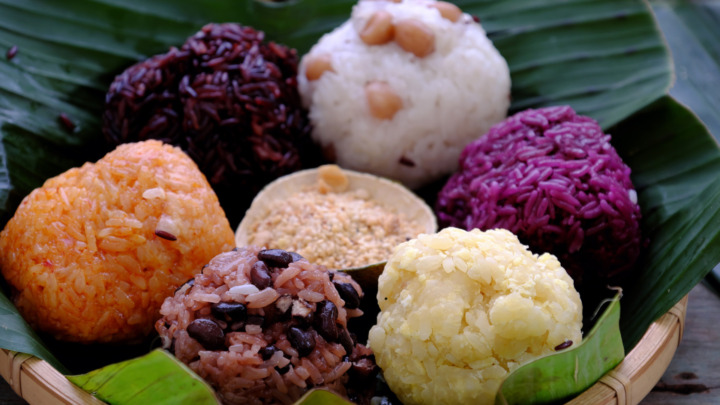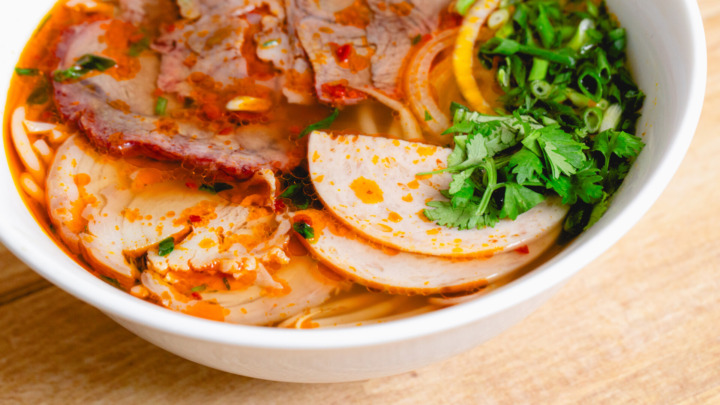Vietnamese Cuisine and Pandan Leaf
Have you ever heard of Pandan Reef?
Have you ever heard of pandan leaf? Pandan leaf is a sweet-smelling evergreen plant widely used in East and Southeast Asia. At Viet restaurant, we serve “Pandan Leaf Tea” made from pandan leaf as a free drink. In fact, its sweet aroma and bright green color are the essence of Vietnamese cuisine.
Octopus? Panda? Pineapple? Vanilla? Names of Pandan Leaves
The official name of pandan leaf is “Nioitakonoki”! It is a plant native to tropical Asia, classified in the octopus family and the octopus genus. It was so named because its basking leaves look like the legs of an octopus… It also produces pineapple-like fruit, but it is not something that can be eaten with relish. As mentioned earlier, it has a sweet, rich aroma and is sometimes called the “vanilla of the Orient. Anyway, it is over-attributed.

A green gem nurtured by the land of Vietnam
Blessings of the tropics – ideal environment for growing pandan reef
There is actually a secret to why pandan leaf has such a rich aroma that it is called the “vanilla of the Orient. This plant prefers hot and humid tropical and subtropical climates, and grows best in environments with average annual temperatures of 25-30°C and humidity of 70-80%. It also grows best in soils with abundant rainfall (1,500-2,500 mm/year) and good drainage.
Vietnam’s Climate – Heaven for the Pandan Reef
Vietnam’s climate is ideal for pandan leaf cultivation. Especially in the Mekong Delta region, the high temperature and humidity throughout the year, abundant water resources, and fertile soil support the growth of pandan leaf. Commercial cultivation is flourishing in Can Tho, An Giang, and Dong Thap provinces, where high quality pandan leaves are harvested consistently.
Hassle-Free Cultivation
Interestingly, pandan leaves are relatively easy to grow. It can be easily multiplied by cuttings, and once planted, the leaves can be harvested for several years. It is also resistant to pests and does not require many special pesticides. Therefore, it has become a familiar plant in Vietnamese households, where it can be grown in the garden.
A supporting role!
How Pandan Leaf is used in Vietnam
Pandan leaf is useful in many ways in Vietnamese kitchens. First, let us introduce its use as a coloring agent! Take, for example, xôi, a Vietnamese-style rice bowl! If you visit the market in the morning, you will see soi in a variety of colors: white, purple, green, yellow, etc. Among them, green soi (xôi) is the most popular. Among them, green soi (Xôi vị) is colored with pandan leaves.

Other,
- Bánh cốm: Hanoi’s traditional sweet rice cake filled with mung bean paste
- bánh da lợn: sticky “Uiro” like cake
- Pandan leaf jelly (thạch lá dứa ): jelly that goes into coconut Jelly
- Sâm dứa sữa: Vietnamese shaved ice with pandan leaf syrup
For Western-style food, it is also used to color cakes, bread, etc. If you visit Vietnam, please look for green food!
Another thing that should not be forgotten is its use as a flavoring agent. Pandan leaf tea (Trà Sâm Dứa) is a staple for Vietnamese people. It is also known as Pandan Korai tea. It is also used to flavor jasmine rice. It is truly a supporting role for Vietnamese cuisine!
Why did pandan leaf take root in Vietnamese cuisine?
Pandan leaf is deeply rooted in Vietnamese culinary culture for several reasons:
geographical advantage
As mentioned above, Vietnam’s climate is ideal for pandan leaf cultivation.
Cultural Background
In ancient traditional medicine, pandan leaves are believed to cool and detoxify the body
economy (saving money)
Because it is easy to cultivate and can be harvested stably throughout the year, it has become a common food for the common people.
practicality
As a natural coloring agent, it is an excellent substitute for chemical additives and as a flavoring agent
This background has made the pandan leaf an integral part of Vietnamese culinary culture.
Effects of Pandan Tea

Pandan leaf contains many ingredients that are good for beauty and health, such as vitamins and amino acids. These ingredients are said to be effective in beautifying the skin, regulating the intestines, antioxidants, anti-inflammatory, and relaxing… Perhaps you have an image of Vietnamese cuisine as healthy. Pandan leaf may be said to play a part in this. The ingredients and effects of pandan leaf may be further clarified in the future. We are looking forward to further research in the future!

Pandan leaf, unfamiliar in Japan …
Pandan leaf is not yet established in Japan. You will have a hard time finding it. Although it is such a pandan leaf, we offer pandan leaf tea as a free drink at each Betoya store! We also sell tea bags of this tea so that you can enjoy it at home. We also sell green soi (Xôi vị) at our prepared food takeout brand, Vietnam Kitchen! We hope you will try to incorporate pandan leaf into your daily life.
Hẹn gặp lại! (Hẹn gặp lại!)










